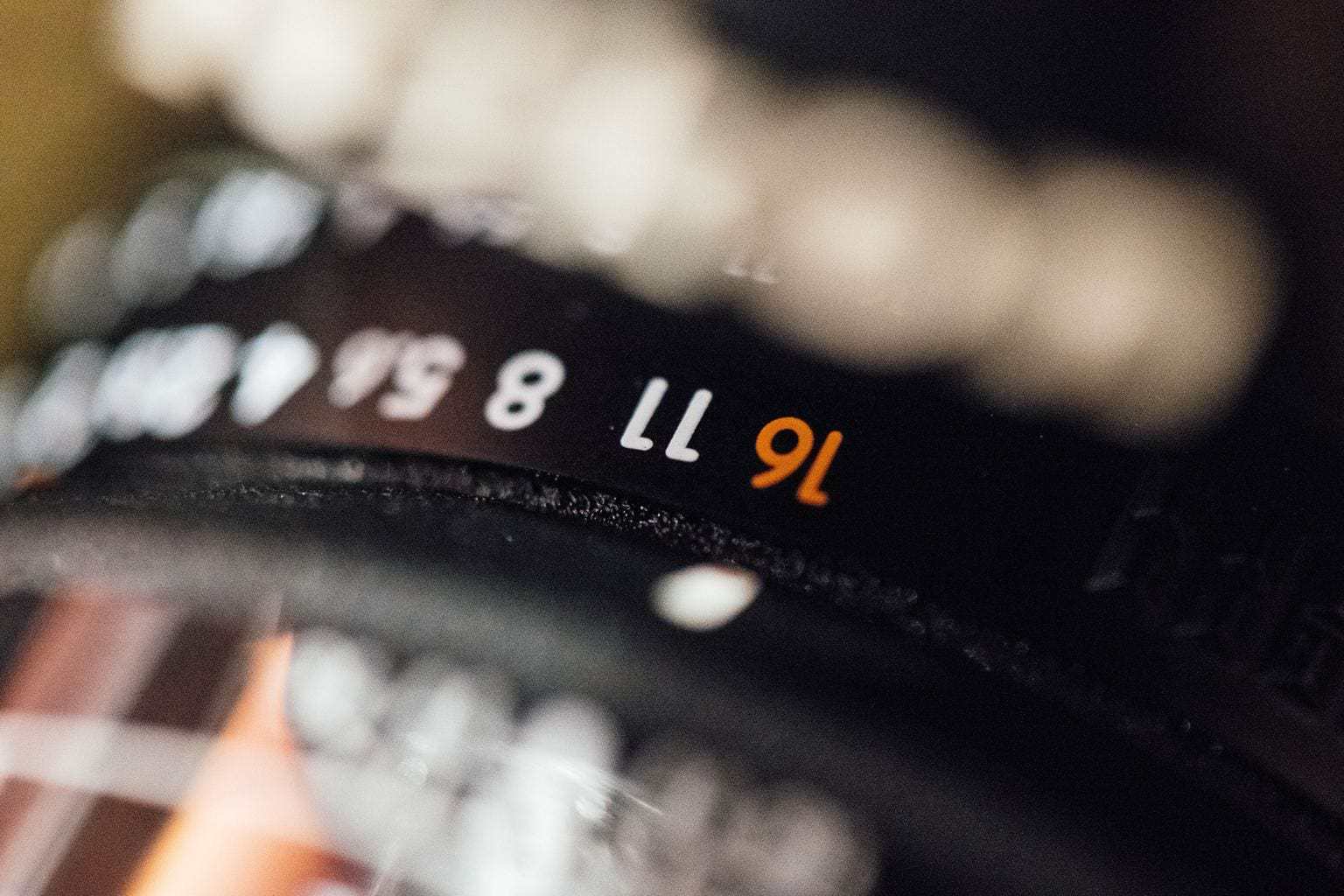Do you want to know what depth of field is and how to master it to achieve spectacular photos?
Today I'm going to tell you how to get the photo you want and you don't have to settle for the one you get . We will see why sometimes you do not get that blurred background that you so long for or why you cannot get what you want to be in focus.
Mastering the depth of field can mean a before and after in your photographs. And this happens by going beyond a large aperture or a small aperture.
As always, I'm going to tell you in the language that characterizes the blog, that of earthlings . Avoiding technicalities and complex explanations. That we are here to make things easier, not to complicate them ;). You stay? You will not regret!
And if what you are looking for is to master photography in Manual Mode , we have this mega guide (previous link) where we explain it to you in depth so that you lose your fear once and for all.
Come on, without further ado, let's get on with today's topic:
WHAT IS DEPTH OF FIELD?
Depth of field is a term used in photography to refer to the distance between the closest in-focus sharp point and the farthest in-focus sharp point within the frame of a photograph. The in-focus or sharp area of an image in contrast to other areas of less focus.
A lens can only focus on one point within a frame, not several. Of course, that focused point can be broader or smaller, as we want and depending on the capabilities of said objective.
The sharp, well-focused area of the image determines the depth of field.
Mario explains it to you in a very graphic and fun way in this video:
Therefore, an image where everything or almost everything is in focus (or sharp) has a large depth of field. If, on the other hand, only a small part of the scene appears sharp in contrast to the rest being out of focus, it is a photograph with a shallow depth of field. Until here, of course, right?
In case there is still any doubt, we are going to see it with a graph and with two example photos.
On the left you can see that we have achieved a great depth of field , so that the camera focuses a wide distance on us, practically from 5 to 15.
On the other hand, on the right side we have greatly reduced the depth of field , that is, the area in focus, so that everything in the photo will be out of focus except what is between 9 and 11 in this case.
Now look at these two images so you can understand the concept much better:
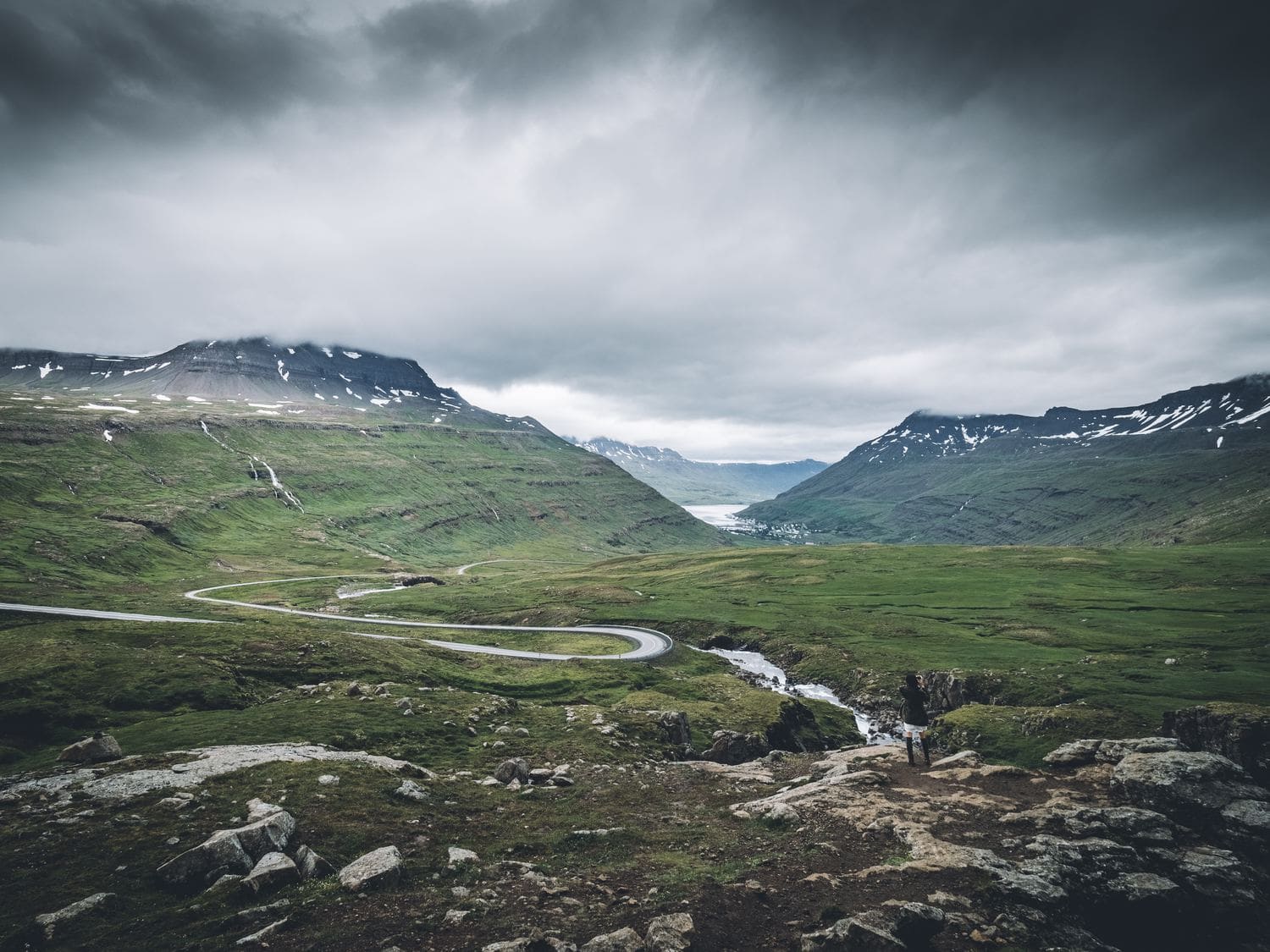
As you can see, the whole scene is in focus, you can distinguish the details of all the planes, from the rocks and the grass in the foreground, to the mountains in the background with their snow.
On the other hand, in the following photograph we can only observe a few flowers with their stems, what is in the closest plane we intuit or see more blurred and the background becomes a practically smooth area.

DEPTH OF FIELD AND PLANE OF FOCUS
An important fact before continuing. The focus plane is perpendicular to the shooting direction. If you look at this scheme, when taking the photo, if one of those portrayed took a step forward, with a very small depth of field it could come out of focus.
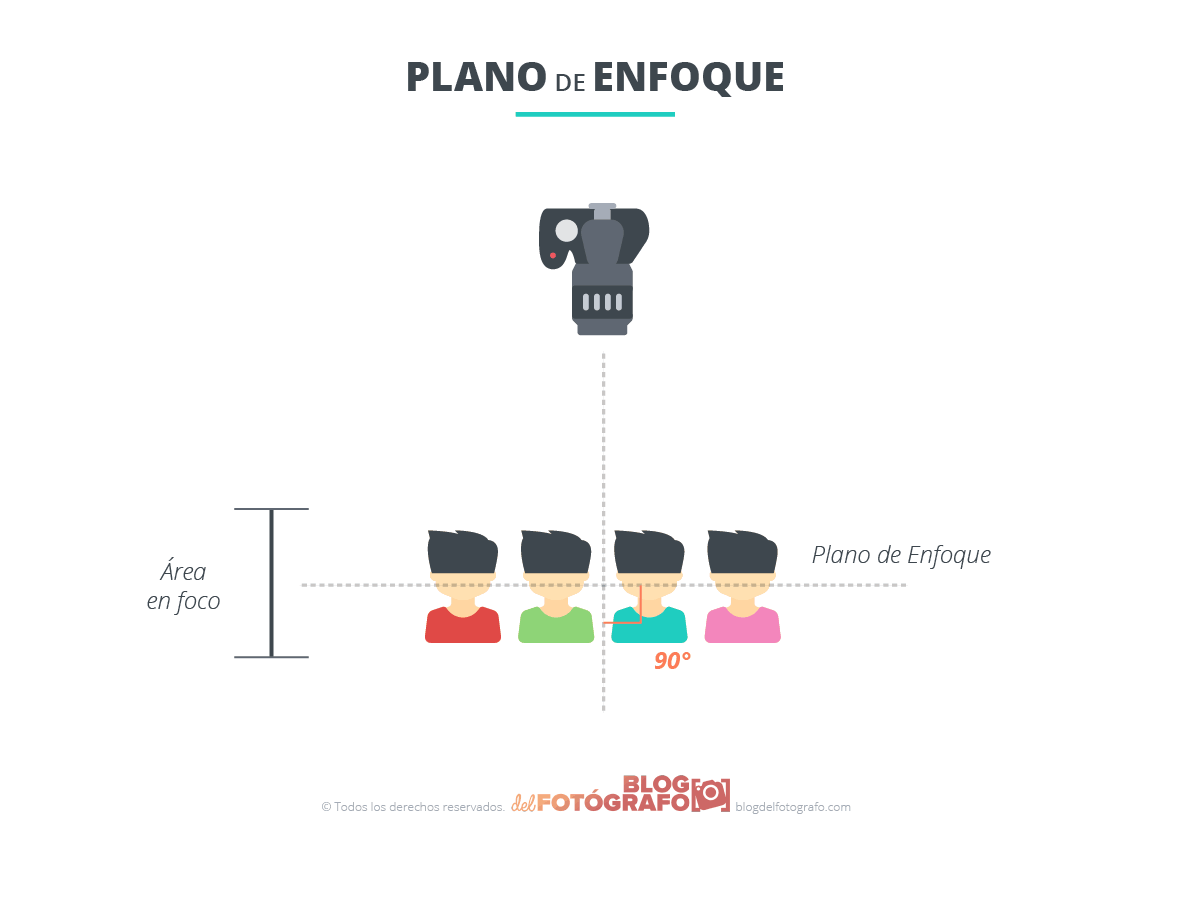
For this reason, when we use large apertures, we must be careful with focusing first and reframing later, because we can leave the protagonist out of focus.
WHAT IS DEPTH OF FIELD USED FOR?
Depth of field, more than a technical concept, which it is, is a compositional instrument. It is technique at the service of creativity. Using it, you can compose the image at will, erase annoying backgrounds, focus attention on a single point in the image, achieve spectacular portraits, or show an entire landscape from start to finish.
The depth of field allows you to own the image. Modify the scene to your liking.
If you think about it, it's like you have a magic wand to make things disappear, or to tell the viewer without a word where to look.
Next, I am going to give you practical examples in which the depth of field plays an essential role.
- Large depth of field: it is usually used, generally, in situations in which we want everything to appear in focus, for example, nature photography, landscapes, mountains, etc.
- Shallow depth of field: we use it in situations in which we want to capture the viewer's attention and focus it on a specific point, for example, to give prominence to the subject of a portrait, or to highlight one object among several.
Are you now understanding why mastering it means a before and after in your photographs? ;P Well, let's continue to get the most out of it. Today I have proposed to clear all your doubts and get a new universe to open up before you.
WHAT FACTORS INFLUENCE DEPTH OF FIELD?
There are four factors that influence depth of field. Let's see one by one.
DIAPHRAGM APERTURE
This is a factor that is limited by the equipment, more specifically, the objective . The diaphragm is the part of your lens that regulates the entry of light.
The lower the number (f/), the aperture will be larger, more light will enter, and the depth of field will be shallower. Aperture is the first step we take to control depth of field.

To make it clear, because the concept is confusing when expressed backwards:
- large aperture ⇒ small depth of field (small area in focus)
- small aperture ⇒ large depth of field (lots of area in focus)
LIMITATIONS?
Those of the objective. For example, the lenses that usually come with the kit usually have a maximum aperture of f/3.5. Some do not go beyond f / 5.6 even. That means the ability to blur is much more limited than with a brighter lens.
If this is your case, you just found an answer to why you don't get those portraits where only the eyes are in focus.
So that you do not get discouraged, you should know that there are some tricks that can help you achieve greater focus, we will see them right away.
There are many reasons to buy a bright lens (with an aperture of at least f/2) but if the kit lens is the lens you have, learn how to make the most of it. The biggest limitation can be yourself ;).
Other limitations are side effects. It is not about opening or closing the diaphragm and that's it. It has consequences. If you know anything about the triangle of light, you already know which ones. If not, go to the link article. Here is a summary graph.

The more you open the diaphragm, the more light will enter, the more you close it, the less light. Which, to achieve a correct exposure, you will need to play with other values such as ISO or shutter speed (with the risk of obtaining shaky or noisy photos).
This is another topic, but I had to tell you, don't get frustrated if you don't get the expected results! The triangle of light is a photographic concept that you must learn well before launching yourself to master the depth of field if you do not want to fail in the attempt.
FOCUS DISTANCE
Another factor that influences depth of field is the distance from which you focus. It is also interesting to know that the same depth of field is not usually achieved behind the plane of focus as in front of it. Normally behind the focused plane there will be greater depth of field.
If you want to achieve the same depth of field in front as in the back, you'll need to get closer to the focus subject.
In this graph I think you will see it more clearly. Using the same focal length and the same aperture, as we move away from the subject (from the plane we want to focus on) we find that there is more area behind that remains in focus (the pink area is the one that remains in focus).
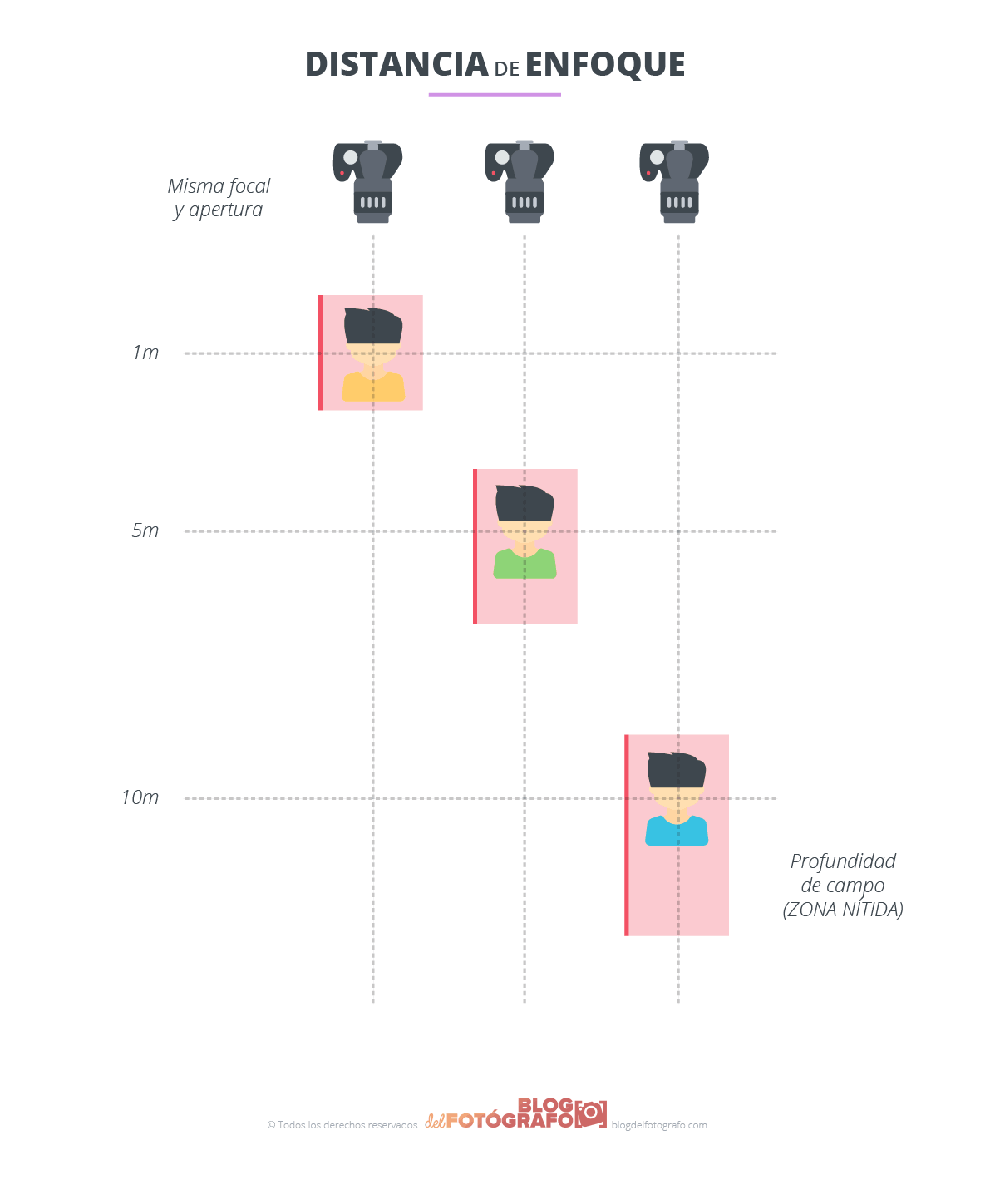
Therefore, a trick to achieve greater blur is to get closer to the subject.
Here you may see it even clearer. The shaded area is the area that will be in focus.


FOCAL DISTANCE
By now I understand that you know what focal length is, otherwise please pause and jump on to this article. If you already know, we continue.
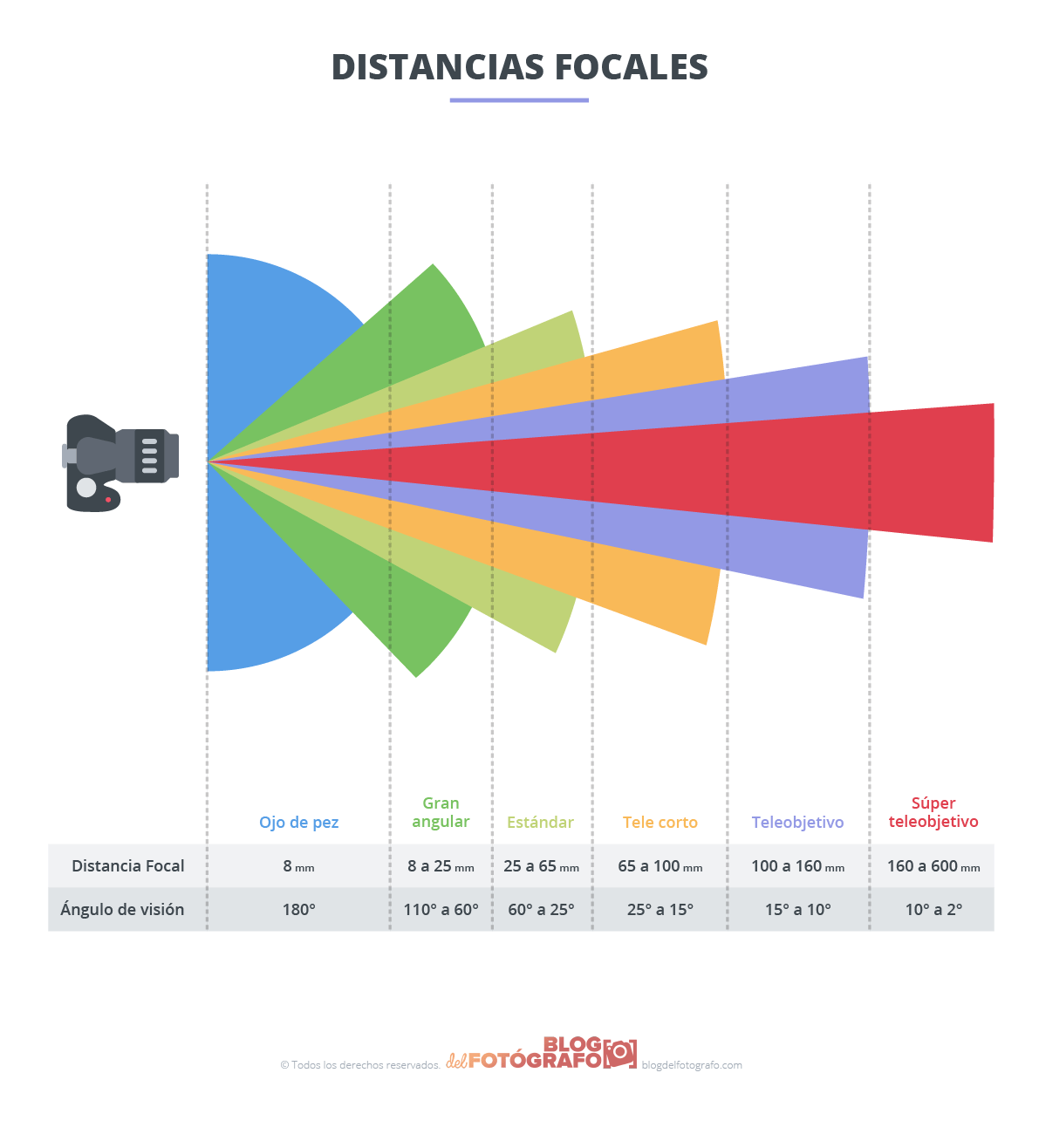
The focal length you use also affects depth of field. This is the ratio taking into account the same focus distance, aperture, etc. :
- The longer the focal length (eg 200mm)⇒the shallower depth of field
- The shorter the focal length (eg 35mm) ⇒ the greater depth of field
This is one of the reasons why wide angles are more suitable for landscape photography, because in addition to covering a larger portion of the scene, they achieve a greater depth of field or area in focus.
CIRCLE OF CONFUSION
First of all, you should know that the circle of confusion is normally predetermined in calculators for some common parameters (maximum magnifications 20x25cm, viewing distance 25cm and a "standard" visual acuity).
Now, you are interested in knowing this value if you want to make much larger enlargements and control very well which parts are in focus and which are not.
Now to the subject, the circle of confusion is the maximum size that a blurred point in the image must have on the camera sensor so that the observer can see it clearly in the final image. This depends on the size of the sensor, the visual acuity of the observer, the distance from which the photo will be viewed and the print size. And how do you know what its value is? here is a calculator.
But I remind you that, for normal situations, the depth of field calculator will set the default value and you will achieve very acceptable results.
DEPTH OF FIELD SIMULATOR
To see all these concepts more clearly and without leaving your chair, I will tell you a secret, there are what are called photographic simulators and there is one, in particular, that comes to you from the cinema to understand all of what we are talking about. This is DOF simulator.
Leave it open in another window, when you finish reading the article, go to the simulator and practice these concepts. When you see that you have it clear, write down the next outing in your diary to practice it with your camera!
IN SHORT, HOW TO GET MORE OR LESS DEPTH OF FIELD?
Get a greater depth of field (more sharp area):
- With narrower or smaller apertures (between f/8 and f/22).
- Short focal lengths (10-35mm).
- Longer focus distance (moving away).
- Using the hyperfocal distance (in another section we will see its importance).
- With the edit. Sometimes, we don't have light to close the diaphragm enough or we have to shoot at a very fast speed because it's a moving scene. If you put several images with shallow depth of field together in the editor with the focus on the different planes, you can achieve an image with a greater depth of field.
Get a shallower depth of field (more out of focus area):
- Large or open apertures (f/1.4, f/3.5).
- Long focal lengths (70-400mm).
- Focusing from a shorter distance (get closer to the object you want to focus on).
This does not mean that you have to fulfill each and every one of the points, but that each one of them will help you to achieve a greater or lesser depth of field.
For example, going back to the kit lens, you want a shallow depth of field to take a portrait with the background out of focus. I am going to use my objective as an example, which is an 18-55mm f/3.5-5.6. To achieve a greater blur you would have to:
- Approach the subject.
- Move the subject away from the background (we have not said this) but the further it is from the background, the more out of focus it will appear.
- Shoot with the longest focal length, in this case 55mm.
- Shoot with the largest aperture, since the focal length is 55mm, the maximum aperture is f/5.6 (f/3.5 would be for an 18mm focal length).
As you can see, some of these tricks can help you achieve greater blur with the kit lens ?. Mark them well!
AND WHAT DOES THE HYPERFOCAL DISTANCE HAVE TO DO WITH IT? WHAT IS IT FOR?
This concept will help you when photographing landscapes or stars, especially with short focal length lenses (10-35mm). It will help you achieve maximum depth of field. There are tables and calculators to calculate it. Here you have all the information about the extended hyperfocal.
But before continuing I leave you a trick: when you have the hyperfocal distance, go overboard, focus at a distance slightly greater than the one you have calculated. If you don't arrive, even if it's very little, what's left on the horizon will be out of focus. Better to spend, so you assure.
Here is a video summary of how to calculate the hyperfocal.
DEPTH OF FIELD CALCULATOR
There are apps that can help you calculate depth of field. For example this. With it you can calculate the adjustments necessary to achieve the level of sharpness you want. Other free apps:
- Android: DOF
- iPhone: SetMyCamera
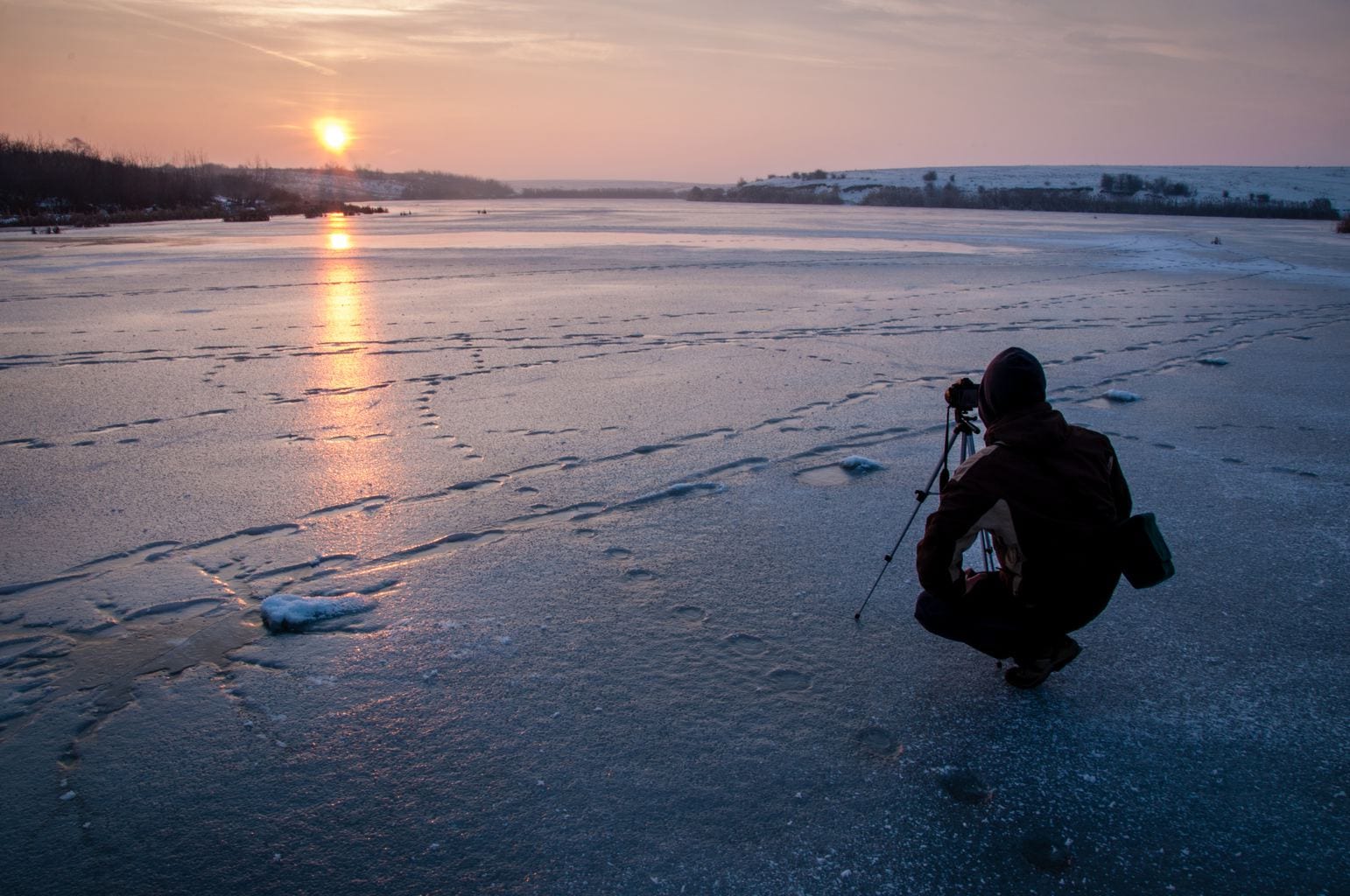
It will be of no use for you to have reached the end of the article if you do not put into practice what you have read. Go to the simulator, mess with it until you have it very clear in your head. Then put it into practice. This is how you learn. Reading is the first step on the road. The goal is reached on foot.

